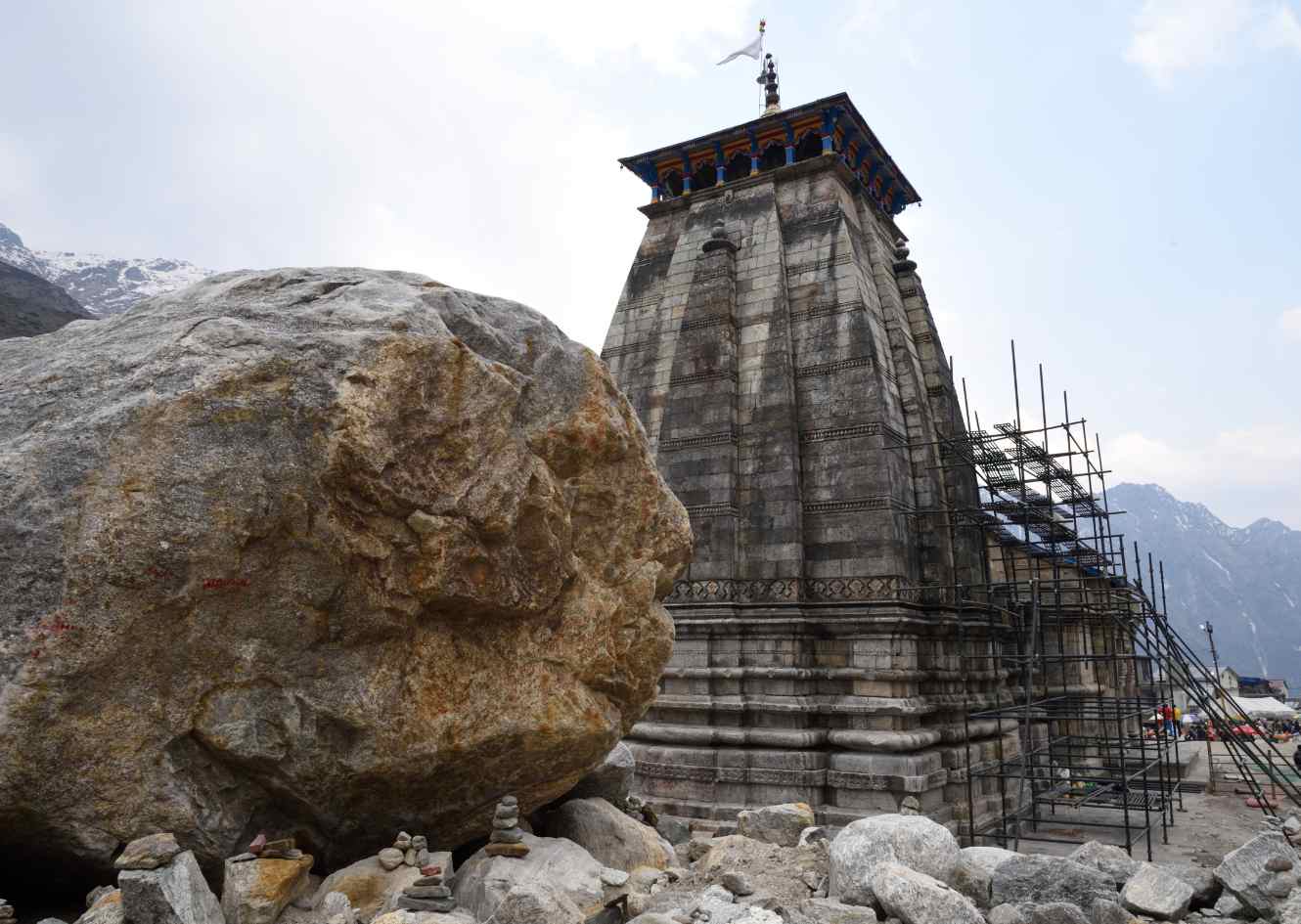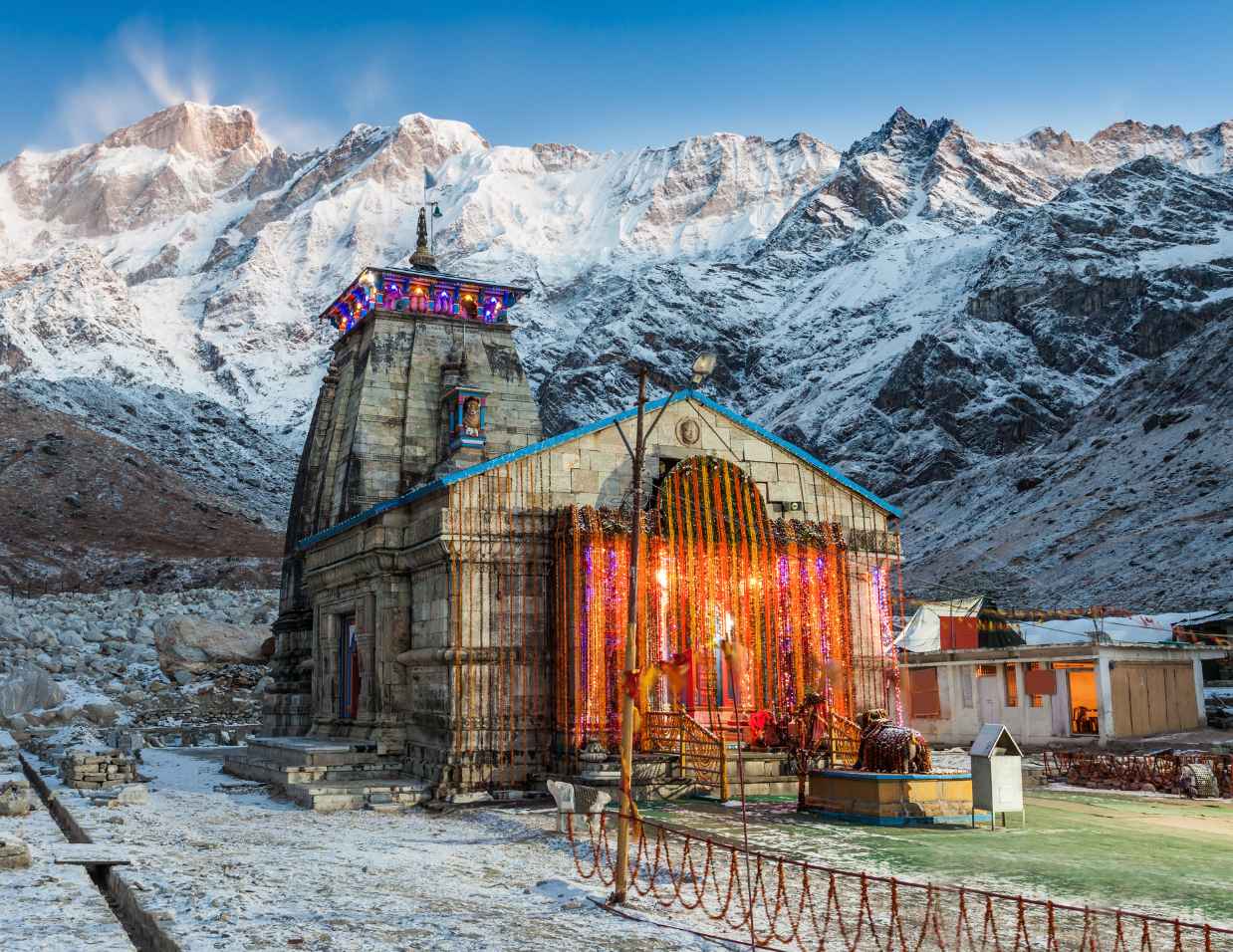The Divine Boulder That Protected The Kedarnath Temple

The Divine Boulder, crucial in safeguarding the Kedarnath temple, has become symbolic of hope and divine protection for many believers.
The Kedarnath Temple, located in the Indian state of Uttarakhand, is one of the holiest shrines dedicated to Lord Shiva. It is part of the Char Dham Yatra, a pilgrimage covering four significant shrines in the Indian Himalayas. The temple’s history and resilience were tested during the catastrophic floods of June 2013, which caused significant devastation in the region.
In mid-June 2013, the Kedarnath valley, along with other regions of Uttarakhand, was hit by heavy rainfall that lasted almost three days. This rainfall resulted in one of the country’s worst natural disasters in decades. The Mandakini river, on whose banks Kedarnath town is located, swelled beyond its limits, causing flash floods. The devastation was widespread, and the impact was felt across multiple dimensions:
The most heart-wrenching impact was the significant loss of human life. Official figures estimate the death toll in the thousands, while many others were reported missing.
The floods occurred during the peak pilgrimage season. Thousands of pilgrims and tourists, who had come to visit the Char Dham Yatra (which includes Yamunotri, Gangotri, Kedarnath, and Badrinath), were stranded. Many lost their lives, while others faced harrowing experiences before they could be rescued.
The raging waters swept away roads, bridges, and buildings. Major infrastructure, including entire stretches of roads and more than 100 bridges, were destroyed, severely impacting connectivity.
The Divine Boulder
During the deluge, a massive rock (often described as the Divine Boulder) started rolling downhill and eventually came to a stop right behind the Kedarnath temple. This rock is believed to have acted as a barrier, diverting the flow of the floodwaters and preventing them from directly hitting the temple. While many structures around the temple were destroyed, the temple remained largely unscathed, apart from some damage to its base.
The Divine Boulder or “Bheem Shila,” as it came to be known, played a crucial role in the narrative of the 2013 Kedarnath floods. It is widely believed that this massive rock played a significant protective role for the Kedarnath Temple during the floods.
The boulder’s positioning behind the temple acted as a barrier against the raging floodwaters and debris. It is believed that the rock diverted the flow of the floodwaters, preventing them from directly hitting and potentially washing away the ancient temple. When the floods subsided, and the devastation became clear, the Kedarnath Temple, although covered in mud and debris, stood largely undamaged. In contrast, many surrounding structures and large portions of the town were destroyed.

Many believers saw the survival of the temple amidst such extensive devastation as a miraculous event, and the boulder was viewed as a divine intervention to protect the sacred shrine. For them, the “Divine Boulder” symbolized hope, resilience, and divine protection.
In the aftermath of the disaster, as rescue and relief operations were underway and stories of survival and loss emerged, the narrative of the “Divine Boulder” protecting the temple became an enduring symbol. It represented the physical protection of a revered religious monument and embodied the people’s spiritual resilience and faith in the face of overwhelming adversity.
Post-Disaster Scenario and Restoration
The Narendra Modi-led government has shown a keen interest in restoring and redeveloping the Kedarnath temple and its surroundings, especially after the devastating floods of 2013. The restoration and redevelopment efforts are not limited to the temple but encompass the entire region to ensure better facilities for pilgrims and local residents and bolster disaster resilience.
The government launched an ambitious plan to redevelop Kedarpuri (the town around Kedarnath Temple). It includes constructing retaining walls around the Mandakini and Saraswati rivers to prevent future floods from causing similar devastation.
A key focus has been on developing infrastructure that is both pilgrim-friendly and environment-friendly. It includes constructing roads, bridges, and pathways, ensuring they are of high quality and can withstand the region’s challenging climatic conditions. The government has worked towards creating better accommodation facilities for pilgrims, including constructing cottages and setting up designated areas for teerth purohits (priests) and other residents.
Efforts have been made to make the yatra (pilgrimage) safer for visitors. These efforts include weather forecast systems, creating better medical facilities, and setting up systems for immediate disaster response. Along with the temple’s restoration, there’s an emphasis on preserving and showcasing the region’s rich cultural heritage.
Prime Minister Narendra Modi has personally visited Kedarnath several times since the disaster to inspect and review the progress of the reconstruction efforts. The Modi government has actively promoted the Char Dham Yatra as part of its push to boost religious tourism in the country. The improved facilities aim to make the pilgrimage smoother and more accessible for devotees.
The Kedarnath Temple, with its rich history and spiritual significance, faced an unprecedented challenge in 2013. While the tragedy highlighted nature’s fury, stories like the Divine Boulder also underscored faith, resilience, and the will to rebuild amidst adversity.
